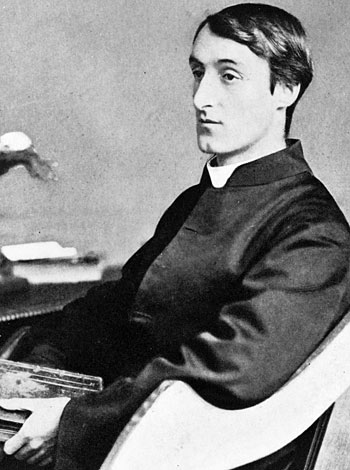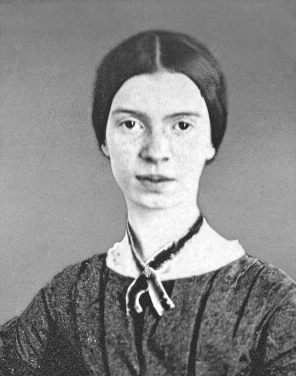The time of year has arrived when the loveliest of seasons is nearly over and it might be a good idea to celebrate spring by looking at some poems about spring.
Spring is universally loved. After the long cold winter months, sweet spring returns, bringing cherry blossoms and new life and beginnings. So it is a small wonder that spring has inspired many of the finest poets in the world to put pen to paper.
It’s impossible not to notice springtime due to the abundance of cherry blossoms. They transform the landscape into a veritable fairy garden. Yet, once they disappear, one feels slightly saddened — a feeling so beautifully captured in the poem by Emily Dickinson that I discuss below.
In the poems about spring that I have selected here, spring is not only regarded as a time of beauty and contentment. The poets are often keenly aware that spring is part of the cycle of the natural world and that it won’t last.
In many of the poems, the poets also describe the perfection of spring to contrast it with something less than perfect. To my mind, the poems below beautifully describe springtime and humankind’s nature. Read on to see the top examples of poems about Spring to inspire your next writing project.
Contents
Here are some of the best Poems About Spring
1. Spring by Gerard Manley Hopkins

“Nothing is so beautiful as Spring —
When weeds, in wheels, shoot long and lovely and lush”
Although Gerard Manley Hopkins is today considered one of the greatest poets of the Victorian era, many of his poems were not published during his lifetime. This is because of Hopkins’s poetic language and style, which were radical for his time. He, for instance, used a sprung rhythm, which allowed him to place multiple stressed syllables, one after another, in his poetry.
This poem is an excellent example of how a poet uses spring, associated with rebirth and celebration, to highlight a more somber underlying theme. In the first stanza, the speaker focuses on spring’s abundance and joy. All the speaker’s senses seem to be in overdrive, with the song of a thrush striking the ear “like lightnings” and the glassy leaves of the peartree brushing the “descending blue” of the sky. Up to the end of the stanza, the reader has good reason to believe that this is a happy poem celebrating spring.
However, in the second stanza, the poem’s mood changes when the speaker compares spring and the Garden of Eden. Reflecting on the Fall of Man, the speaker prays to God to protect children so they do not “cloy” and change like the beauty of spring inevitably will. The expulsion of humanity from the Garden of Eden is repeated every time a child loses their innocence. The positivity of the first stanza is replaced with negativity in the second stanza, which is highlighted through words such as cloy, cloud, and sour. You might also be interested in these articles about autumn.
2. Sonnet 98 by William Shakespeare

“From you have I been absent in the spring,
When proud-pied April, dressed in all his trim,
Hath put a spirit of youth in everything”
Sonnet 98 forms part of Shakespeare’s Fair Youth sonnets, in which the speaker of the poems expresses his admiration and love for an unnamed young man. The identity of this unnamed young man has been the subject of heated debate among scholars, with some stating that he might have been Henry Wriothesly, the 3rd Earl Of Southampton.
Although this sonnet describes the beauty of spring and its “figures of delight,” the tone is somber. Despite the “sweet smells of different flowers in odour,” the speaker states that, for him, it still feels like winter because of his friend’s absence. As you will see in subsequent poems mentioned in this list, poets often use the theme of spring, which is supposed to be a happy time, to highlight feelings of discontent in the speaker.
As is always the case with an English sonnet, the closing couplet of this poem provides a stark contrast to what came before. Through words such as winter and shadow, Shakespeare clearly shows how different the speaker’s inner world is from his surroundings. To learn more about poems and poetry, read our guide to what is a sonnet in poetry. You can also search for more poems using our search bar.
3. “The Enkindled Spring” by D. H. Lawrence

“This spring as it comes bursts up in bonfires green,
Wild puffing of emerald trees and flame-filled bushes”
Although he is remembered mainly for his controversial novels, such as Lady Chatterley’s Lover, D. H. Lawrence was also an accomplished poet. His poetry often contains imagery and evocations of the natural world.
The poem “The Enkindled Spring” contains a metaphor in which spring is compared to fire. The first stanza creates a sense of energy and movement through words such as bursts, puffing, flame-filled, and flickering rushes. This feeling of motion becomes more powerful in the second stanza. “Green fires” are lit on the soil, and sparks “puff in wild gyration.”
However, by the third stanza, the feeling of motion and boundless energy starts to feel chaotic and unmanageable. “This leaping combustion of spring” overwhelms the mind, and man feels lost in this wild and powerful natural scene. As such, spring becomes something threatening in this poem. Are humans the masters in this domain, or are they subordinated to nature?
4. “A Light Exists in Spring” by Emily Dickinson

“A Light exists in Spring
Not present on the Year
At any other period”
Emily Dickinson’s poetic style didn’t fit the conventional poetic rules of her time. Her unique style included unconventional capitalization and punctuation, short lines, and slant rhyme, which is where rhyming words have similar but not identical sounds. Because of her eccentric poetic style, she was hardly published in her life. Today, however, she is regarded as one of America’s most important poets.
In “A Light Exists in Spring,” Dickinson evokes the distinctive light that early spring brings. This light is indescribable and can’t be explained through science. Yet, although it is barely visible, humans can detect this magical light. It “waits upon the Lawn” and “almost speaks to you.”
Through the description of how humans can detect this light even though it is intangible and has not been identified by scientists, Dickinson implies a strong link between humans and the natural world. The speaker in tune with nature stands in stark contrast to the speaker in D. H. Lawrence’s “The Enkindled Spring,” who feels entirely out of place in nature.
However, nothing lasts forever; eventually, this ethereal light disappears, leaving humankind behind. The speaker experiences this as a loss that robs them of their contentment, much like when trade or business encroaches on the holy sacrament. Some of the magic and wonder is gone.
5. “Lines Written in Early Spring” by William Wordsworth

“I heard a thousand blended notes,
While in a grove I sat reclined,
In that sweet mood when pleasant thoughts
Bring sad thoughts to the mind”
William Wordsworth was one of the first English Romantic poets. Romanticism was characterized by a focus on both human nature and the natural world, as well as the deep connection between the two. In many of Wordsworth’s poems, he regards human beings and nature as complementary elements that form part of a bigger whole.
“Lines Written in Early Spring” is one of Wordsworth’s poems that focuses on the natural world and the connection between nature and humankind. This connection is clearly stated in the lines “To her fair works did Nature link/ The human soul.”
In the poem, Wordsworth paints a picture of springtime, when “the budding twigs spread out their fan” and “every flower/ Enjoys the air it breathes.” However, as is the case with most other poems in this list, Wordsworth describes the bounty and beauty of spring to contrast it with something else, which, in this instance, is the state or nature of humankind.
The contrast between the perfection of nature and the imperfection of humankind is already hinted at in the first stanza when the speaker states, “pleasant thoughts, Bring sad thoughts to mind.” While the speaker is experiencing the joy of spring, they can’t help but think about the state that humanity has come to. By disconnecting itself from the natural world, humankind has forfeited harmony and perfection and has since existed in a state of despair, chaos, and destruction.
6. “The Thrush” by Edward Thomas

“When Winter’s ahead,
What can you read in November
That you read in April
When Winter’s dead?”
Edward Thomas was a poet who often depicted rural England in his poetry. But, as a modernist poet, he was also preoccupied with how humankind has become disconnected and alienated from the natural world and each other.
In “The Thrush,” Thomas juxtaposes winter with spring and describes the natural world’s cyclical character. While listening to a thrush “singing continuously,” the speaker wonders whether the thrush realizes the difference between winter and spring or whether they don’t notice the different seasons.
The perspective then moves to that of the speaker, who says he can name all the months. He contrasts the tendency of humans to think about “all that’s ahead and behind” with the thrush, who lives and sings without thinking about different seasons.
While the bird’s way of life may seem far simpler and perhaps less sophisticated than humans, the speaker regards it as perhaps the wiser and more joyful way of living. If you are interested in learning more about writing poetry, check out our guide to metaphor poems! Or you can also use our search bar to search for many more poems from different poets.